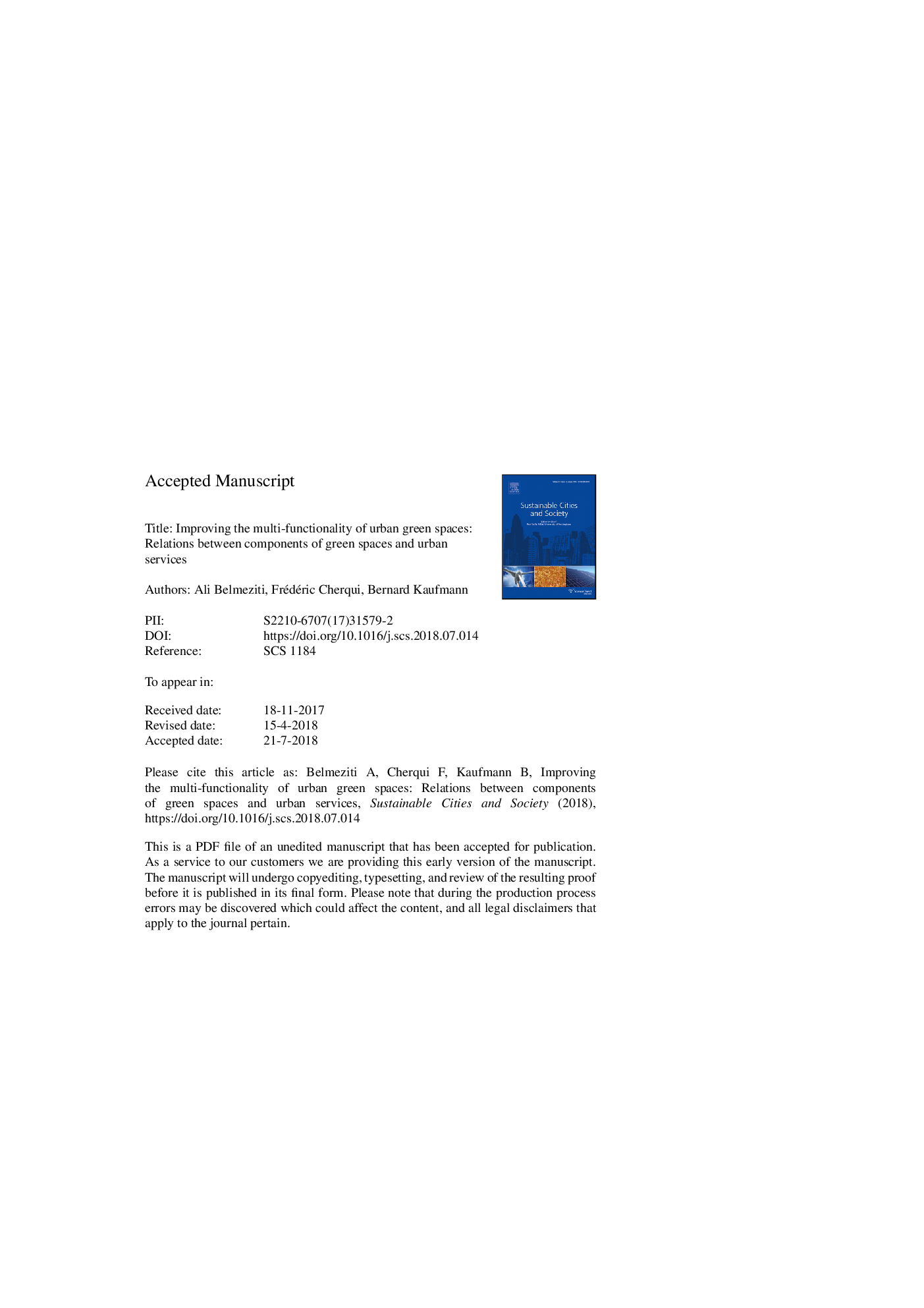| Article ID | Journal | Published Year | Pages | File Type |
|---|---|---|---|---|
| 8947173 | Sustainable Cities and Society | 2018 | 23 Pages |
Abstract
Urban green spaces are vital parts of any city due to their capacity to provide a large number of urban services to a wide range of stakeholders. However, since urban green spaces can consume large areas of the city, where land is both scarce and expensive, planners and managers are usually faced with conflicting challenges. They must endeavour to provide the tremendous amount of urban services, which are expected by the stakeholder, while simultaneously, attempting the careful design of urban green spaces in a limited area. Using a combined method based on the findings of a literature review, stakeholder participation and a case study, this paper puts forward a new typology, that of improving multi-functionality of the urban green space, as a solution to the challenge of limited area available. This new typology suggests that the linking of greenspace components with urban green services could allow planners and managers to overlay the services expected, by selecting the best possible combination of greenspace components. In fact, with this new typology, planners and managers could choose the combination of greenspace components first, and then establish the set of urban services provided. It was tested on the urban green spaces of the Doua campus (Lyon, France) which led to suggestions, made to the campus manager, on how to improve urban services without increasing the green areas.
Related Topics
Physical Sciences and Engineering
Energy
Renewable Energy, Sustainability and the Environment
Authors
Ali Belmeziti, Frédéric Cherqui, Bernard Kaufmann,
